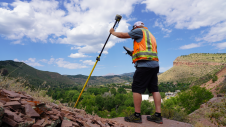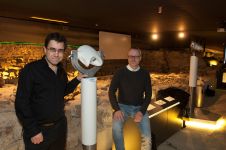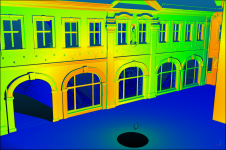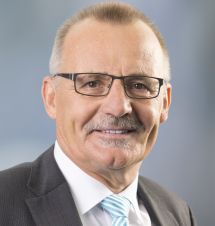为气候变化寻找未来的地理空间解决方案
In this interview, Rudolf Staiger, president of FIG, shares his thoughts on the geospatial industry, including market trends, technology drivers and challenges, and the impacts of COVID-19 and climate change.
What has been the impact of COVID-19 on your business?
The aim of the International Federation of Surveyors (FIG) is to strengthen and to promote the surveying and geospatial profession in a very broad sense. As a non-profit and non-governmental organization, we use different promotion channels and platforms. One very important format is our yearly event, the FIG Working Weeks, and every four years we organize an even bigger event: the FIG Congress. Due to COVID-19, we had to cancel the Working Week 2020 and instead transformed it into a virtual Working Week in 2021, organized by our Dutch colleagues. It was a great success, but almost everybody expressed the wish to meet in person again soon. Thanks to COVID-19, we learned that videoconferences can replace some meetings and are effective when working on a specific task. While this means that in-person meetings can be reduced, they are not completely replaceable. And for the moment, the biggest challenge is the uncertainty with regard to the future events, such as who will be able to travel and the financial risks. We knew that many FIG members were struggling throughout 2020, which is why we reduced the FIG membership fees by 20% as a one-time gesture in 2021.
What do you regard as the key market trend in the years ahead?
测量和地理空间行业的关键市场趋势是可扩展的基于云的应用程序,并在自动化甚至自动操作模式下使用了新的传感器平台,例如无人机或移动扫描设备。数字化一直是我们行业议程的重要话题,这将在未来继续。
您期望在未来几年中最重要的是哪种技术驱动力?
The technological drivers are artificial intelligence (AI), Internet of Things (IoT) and distributed and scalable software applications. Real-time wireless communication will also play a more important role in the future.
What do you see as the main challenge in the near future?
我们必须克服COVID-19。这有医疗,人类,社会和经济方面,并且有迹象表明,贫穷的国家和地区比世界上富裕的地区受到严重打击。换句话说,将来,较富裕的国家应该比以往任何时候都更加强烈地支持我们世界上贫穷的地区。根据每日新闻,您会得到这样的印象,即其他燃烧的问题,例如气候变化,海平面上升,碳足迹和化石燃料已经从我们的雷达屏幕上消失了,因此我们需要回到找到这些问题的未来解决方案。可持续发展目标(SDG)仍在议程中。无花果工作队一直在研究无花果如何为可持续发展目标做出贡献。关于我们的年度活动,未来几年的主要挑战是找到最佳的兴建后活动格式。大多数人都将混合形式视为最明显的答案。不幸的是,混合事件构成了许多挑战,例如较高的生产成本伴随着较低的注册费,对不同时区的考虑以及与虚拟受众和现场参与者的更复杂的同时互动。
Due to the climate crisis, companies and organizations urgently need to contribute to a safer and more sustainable world. What is your vision on this?
The majority of the global players in the surveying and geospatial industry are high-tech companies with powerful R&D departments. They would love to contribute to a safer and more sustainable world with innovative products. Therefore, incentives are needed which will make extra efforts for sustainable solutions attractive and worthwhile. Once there is a legal and economic framework for sustainable products, the industry in general – and the geospatial sector in particular – will deliver!
About Rudolf Staiger
鲁道夫·斯塔格(Rudolf Staiger)自2019年以来一直担任无花果公司的总裁。在此之前,他从2011年至2018年担任无花果公司的副总裁,以及2007年至2011年图5(定位和测量)主席。Staiger目前在教授测量工程学的工程德国博丘姆的应用科学大学。他特别感兴趣的领域是测量传感器,激光扫描和数据分析的仪器和校准。他之前曾在Kern和Leica Geosystems(均在瑞士)担任系统工程师,产品经理和软件开发人员的行业工作六年。从1994年到2005年,他在德国大学(德国)教授了测量工程。


























